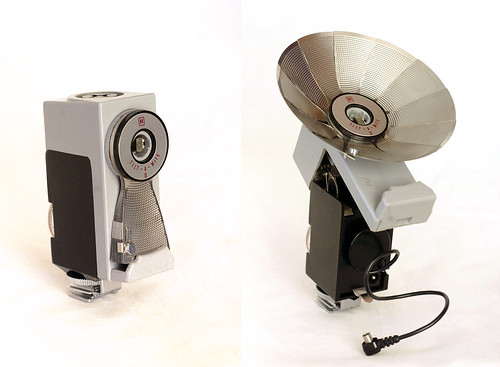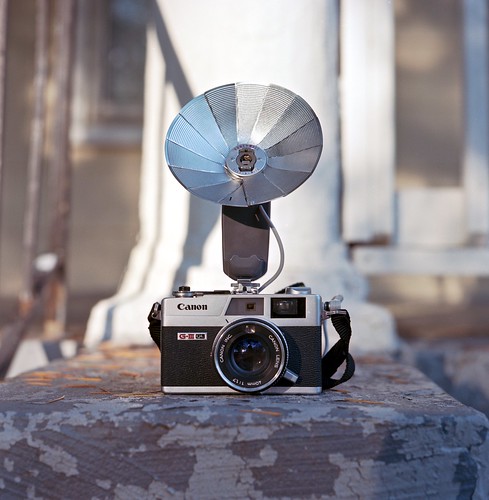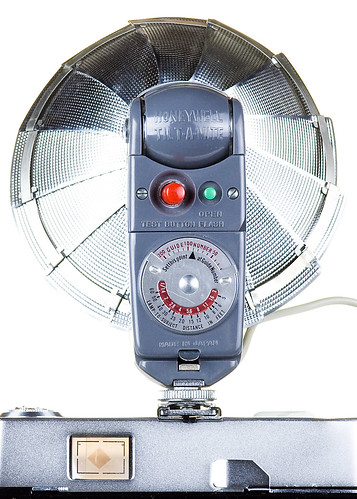Tilt-A-Mite

|
| Tilt-A-Mite II image by Voxphoto (Image rights) |
Tilt-A-Mite was a full-featured brand of flashgun sold by Honeywell beginning in the late 1950s[1], equipped with a foot for mounting into a camera's accessory shoe. (Flash guns and flash synchronizers had been the original products of Heiland Research Corp., of Denver, Colorado, before their 1954 acquisition as the photo products division of Honeywell.)
Tilt-A-Mites were B-C (battery-capacitor) units for flashbulbs with a fan-fold reflector permitting compact storage. As the name suggests, the reflector could be angled away from the subject for bounce flash off the ceiling (or wall, depending on orientation). The "Mite" part of the name carried over from Heiland's mid-1950s Foto-Mite flashguns. A small 15-volt battery (Eveready type #504) provides power to fire a variety of flashbulbs, most typically M3 or M3B.
The original Tilt-A-Mite had a round-topped case, a button to test continuity (without wasting a bulb), and its reflector could be narrowed to focus more light on distant subjects. The sync cable offered interchangeable tips to adapt to different styles of sync connectors, in the era before the PC style had emerged as the universal standard.
The Tilt-A-Mite II offered a more compact, squarer shape; it could make its sync connection through its foot on cameras with a hot shoe, and it included a top socket for flashcubes, which had become commonplace by the 1960s. For mounting without a hot shoe connection, a 12-inch sync cord could be unwound from its internal stowed position, and fitting only PC sockets.
Notes
- ↑ A price of USD $11.95 was quoted in Honeywell's June, 1959 Popular Photography advertisement (Vol. 44, No. 6; page 103)
Links
- Original Tilt-A-Mite instruction sheet from ~Pixelsmithy on Flickr.
- Front and back views of original model, by dżejpi on Flickr

|
| Original Tilt-A-Mite, reflector tilted upwards image by Daniel Warshaw (Image rights) |

|
| Rear panel detail image by zoomclic (Image rights) |